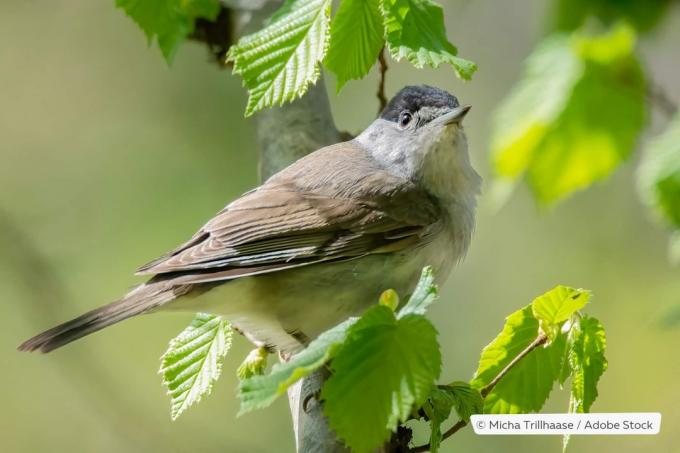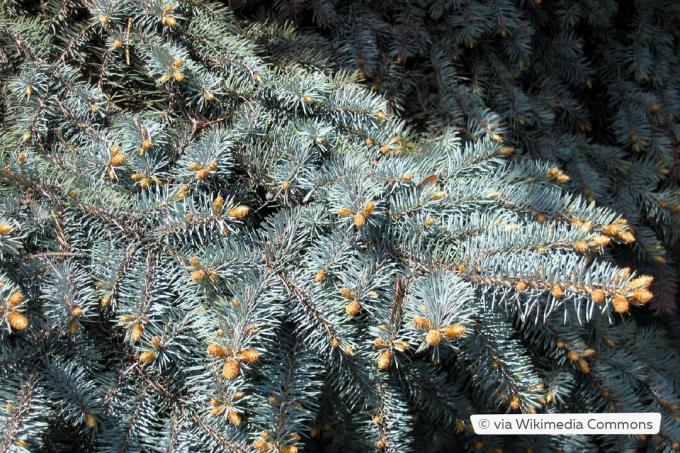
Most people want to be left alone on their own property, especially from the prying eyes of their neighbors. A privacy screen consisting of trees is an alternative. But there are a few things to consider here.
In a nutshell
- Trees suitable as a privacy screen
- comply with legal regulations, such as distances from neighboring properties
- choose suitable trees (with faster growth rate).
- Coniferous trees offer privacy all year round, while deciduous trees lose their leaves in winter
- regular pruning required
Table of contents
- Advantages and disadvantages
- Legal regulations
- Find the right tree species
- conifers
- deciduous trees
- Maintain trees as privacy screens
- frequently asked Questions
Advantages and disadvantages
Trees in the garden are a way to create a natural privacy screen from your neighbors. They create privacy, keep prying eyes away and at the same time liven up the garden. So they are both attractive and useful. The advantages of such a privacy screen are:
- production of oxygen
- Binding of carbon dioxide, increase in humidity and filtering of dust
- offers wind and noise protection
- is habitat for different insects and birds
- Flowers and fruits as a food source for animals
Incidentally, trees as privacy screens create a pleasant feel-good atmosphere.

However, there are not only advantages here, but also some disadvantages:
- Cast shadows on lawns and beds
- Leaf fall in not small amounts
- possibly overhanging branches to the neighboring property
- time-consuming and sometimes expensive cutting measures
Just such a privacy fence on the property line to the neighbor can quickly lead to disputes that very often end up in court.
A notice: Trees do not necessarily have to be planted in groups as privacy screens, often a single tree is enough to protect against prying eyes.
Legal regulations
When planting trees to protect your neighbors from view, you shouldn’t just plant straight away. It should be noted that a small tree will grow into a stately, tall tree in just a few years, which requires a corresponding amount of space. It can quickly lead to impairments on the neighboring property come.

In order to avoid this from the outset, there are various legal regulations. However, these are a matter for the federal states and are laid down in the neighboring law (NachbG) of the respective state. The responsible municipal administrations can provide information on this. are of importance
- Minimum distance to the property line
- depending on growth strength and growth height
- the rule of thumb is: growth height up to 2 m a distance of 0.5 m
- taller trees at least a meter
Tip: With the consent of the neighbor, the prescribed Boundary distance to the neighboring property also be reduced. This should then be formulated in writing to prevent later disputes.
Find the right tree species

The choice of trees as a privacy screen depends primarily on the wishes of the respective garden owner. It depends on whether a privacy screen should exist throughout the year or not. There deciduous trees lose their leaves, privacy would be limited here. However, a dense and wide crown can be a good privacy screen here until autumn. It is also necessary to take into account the
- growth rate
- growth height
- growth width
Below we list some examples of tree species that are well suited as privacy screens.
conifers
Conifers are evergreen. These trees thus fulfill their task as a dense, beautiful green privacy screen all year round.
Blue spruce "Glauca" (Picea pungens)

- Growth height: 1500 to 2000 cm
- Growth width: 600 to 800 cm
- Growth: 15 to 30 cm per year
- Flowering time: April to May, reddish yellow
- Location: sun
Tip: Spruces grow quickly and reach impressive heights. Shoots are already developing near the ground.
Yew (Taxus baccata)

- Growth height: 200 to 1000 cm
- Growth width: 70 to 800 cm
- Growth: 20 to 30 cm per year
- Flowering time: March to April, yellowish
- Location: sun to shade
Garden cypress "Van Pelt's Blue" (Chamaecyparis lawsoniana)
- Growth height: 500 to 800 cm
- Growth width: 200 to 300 cm
- Growth: 20 to 40 cm per year
- Flowering time: April, inconspicuous
- Location: sun to semi-shade
Arborvitae "Smaragd" (Thuja occidentalis)

- Growth height: 400 to 600 cm
- Growth width: 70 to 150 cm
- Growth: 10 to 30 cm
- Flowering time: April to May, greenish-yellow
- Location: sun to semi-shade
Juniper (Juniperus communis)

- Growth height: 400 to 800 cm
- Growth width: 80 to 100 cm
- Growth: 15 to 20 cm per year
- Flowering period: May to June, yellowish-green
- Location: sun
deciduous trees
They shed their leaves in autumn. These trees only offer a dense privacy screen from late spring to autumn.
Rowan (Sorbus aucuparia)

- Growth height: 600 to 1200 cm
- Growth width: 400 to 600 cm
- Growth: 30 to 70 cm per year
- Flowering period: May to June, white
- Location: sun to semi-shade
A notice: Those coming out in the fall red berries serve as food for many birds.
Fire maple (Acer ginnala)

- Growth height: 500 to 600 cm
- Growth width: 300 to 700 cm
- Growth: 35 to 40 cm per year
- Flowering time: May to June, greenish
- Location: sun to shade
Purple Tower poplar (Populus deltoides)
- Height of growth: 600 to 1000 cm, columnar
- Growth width: 400 to 600 cm
- Growth: 50 to 100 cm per year
- Flowering time: May, pink catkins
- Location: sun
Long Red beech (Fagus sylvatica)
- Growth height: 400 to 800 cm
- Growth width: 200 to 400 cm
- Growth: 20 to 50 cm per year
- Flowering period: May to June, green-brown
- Location: sun to shade
Willow (Salix caprea)

- Growth height: 300 to 500 cm
- Growth width: 300 to 400 cm
- Growth: 50 to 100 cm per year
- Flowering period: March to April, catkins yellow to silver, friendly to insects
- Location: sun to semi-shade
Maintain trees as privacy screens

As a rule, trees are undemanding in their care. They need the most attention after planting:
- provide enough water in the first year
- possibly use a watering bag
- Reduce watering from year to year
- water weekly at first
- from the age of five only once a month
- later no more watering necessary
- Depending on the size, tie the newly planted tree to a post
- Mulch the tree disc, layer no higher than five centimetres
- fertilize young trees in April and early June
- pruning mature trees annually
A notice: Large trees should be pruned by a professional. This ensures that the crown of the tree is pruned properly and does not cause any damage in gusts of wind.
frequently asked Questions
In addition to trees, various hedge plants such as cherry laurel (Prunus laurocerasus), the medlar "Red Robin" (Photinia x fraseri) or privet (Ligustrum vulgare) are also ideal. Topiary shrubs in particular come into their own. Climbing plants on trellises such as ivy (Hedera helix), honeysuckle (Lonicera), climbing roses (Rosa), as well as fruit and berry trellises can also be used. Bamboo and tall grasses are also good choices.
Enclosures or a privacy screen at the property line are often disputes among neighbors. A height of 40 to 90 centimeters serves as a guide for walls and fences. If a fence or wall is used as a privacy screen, the height may be between 170 and 190 centimetres. A distance of 50 centimeters from the property line must be maintained. A height of up to 180 centimeters does not require a permit in many federal states.
In most federal states, trees that are less than three meters from the property line can grow up to 15 meters high. If the distance to the property line is more than eight meters, then they may grow beyond 15 meters. It should be noted that there may be a protection of existing buildings if the neighbor has tolerated the tree height for more than five years.
